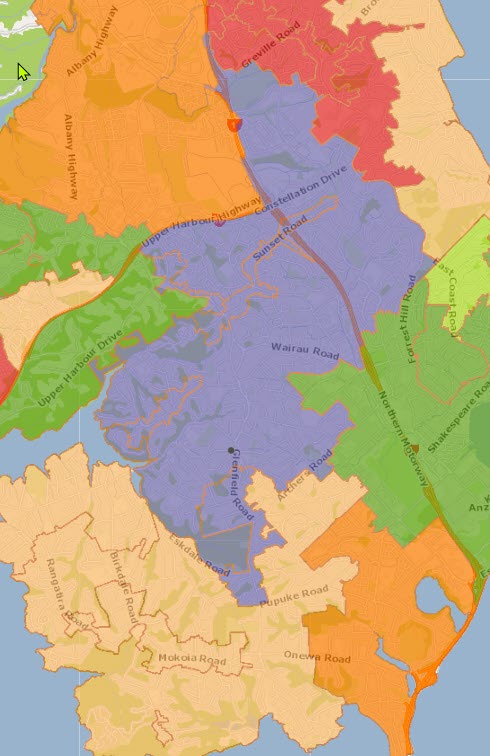
18 October 2024
Yasir Shaikh
Via email
Email:
[FYI request #28460 email]
Dear Yasir
REQUEST FOR INFORMATION UNDER THE LOCAL GOVERNMENT OFFICIAL INFORMATION AND MEETINGS ACT 1987
(LGOIMA) – ASBESTOS CEMENT PIPES IN AUCKLAND'S DRINKING WATER INFRASTRUCTURE
Your request On 20 September 2024, we received your request for information. In particular, your request was as fol ows:
Dear Watercare Services Limited,
Subject: Official Information Request Regarding Asbestos Cement Pipes in Auckland's Drinking Water
Infrastructure
I am writing to request information under the Official Information Act 1982 regarding the use of asbestos
cement pipes in Auckland’s drinking water supply system. Specifically, I request the fol owing information:
1. The total length and number of pipes in Auckland’s drinking water infrastructure that are made from asbestos
cement, including an indication of how many of these pipes were installed between the 1950s and the 1980s.
2. The total length and number of pipes in Auckland’s Glenfield drinking water infrastructure that are made
from asbestos cement, including an indication of how many of these pipes were installed between the 1950s
and the 1980s.
2. Any plans or programs in place to replace or monitor these asbestos cement pipes, including timelines for
their replacement and any assessments of their current condition.
3. Information on the health impacts of asbestos cement pipes being used in drinking water systems, particularly
whether there is any evidence or research indicating potential risks to public health for populations consuming
water that flows through these pipes.
I would appreciate receiving this information in electronic form if possible. If any part of my request is unclear
or requires further detail, please do not hesitate to contact me.
Thank you for your attention to this request. I look forward to your response within the statutory timeframe as
outlined in the Official Information Act.
Kind regards,
Yours faithful y,
Yasir Shaikh
Our response
We provide our response below in the order of your email.
1. The total length and number of pipes in Auckland’s drinking water infrastructure that are made from asbestos
cement, including an indication of how many of these pipes were instal ed between the 1950s and the 1980s.
The drinking water network constitutes thousands of pipe segments between valves, and other network branches that
connect these segments together. Many of the historic records that Watercare holds were digitised from original
paper maps, and they do not provide detail of the number of “pipes” as they were original y instal ed.
Total length of local network pipes (as at 30 June 2024) that are made from asbestos cement = 2,732 km
Total length of local network pipes (instal ed 1 January 1950 – 31 December 1989) that are made from asbestos
cement = 2,596 km
 2. The total length and number of pipes in Auckland’s Glenfield drinking water infrastructure that are made from
asbestos cement, including an indication of how many of these pipes were instal ed between the 1950s and the
1980s.
2. The total length and number of pipes in Auckland’s Glenfield drinking water infrastructure that are made from
asbestos cement, including an indication of how many of these pipes were instal ed between the 1950s and the
1980s.
Please note that Watercare does not hold official suburb boundaries in our GIS data. Therefore, we have used the
Glenfield water supply zone extent as a basis for this query. The extent of this zone is denoted by the purple area
shown below:
Total length of local network pipes in Glenfield water zone (instal ed 1 January 1950 – 31 December 1989) that are
made from asbestos cement = 92 km.
Since the 1990s, pipes made from asbestos cement have not been instal ed in Glenfield water zone.
3. Any plans or programs in place to replace or monitor these asbestos cement pipes, including timelines for their
replacement and any assessments of their current condition.
In line with best practice asset management approaches, Watercare has developed proactive methodology to identify
.pipelines where our level of service provision could be compromised by potential leakage or bursts. This methodology
integrates the hydraulic performance with a materials (structural / deterioration) approach, as wel as a criticality
(consequence of failure) factor and this wil help us monitor, optimise, renew, and improve the performance of the
network. Our renewal programme includes more than $480 mil ion to rehabilitate and replace pipelines over 10 years,
and we expect Asbestos Cement pipelines across the region to be a prominent component of this programme.
 4. Information on the health impacts of asbestos cement pipes being used in drinking water systems, particularly
whether there is any evidence or research indicating potential risks to public health for populations consuming
water that flows through these pipes.
4. Information on the health impacts of asbestos cement pipes being used in drinking water systems, particularly
whether there is any evidence or research indicating potential risks to public health for populations consuming
water that flows through these pipes.
Asbestos-cement pipes were commonly used around the world – including in Auckland – for the construction of water
pipes over several decades. Importantly, the asbestos was used simply to add strength within a cement matrix.
Whileasbestos fibres can be harmful when inhaled, extensive studies have found there is no danger to your health
from ingesting asbestos fibres in drinking water. When asbestos is inhaled, only airborne fibres longer than 10
microns(μm) are hazardous. Asbestos fibres of this size are general y not present in water contained in asbestos pipes.
Neither the World Health Organisation nor Taumata Arowai (New Zealand’s drinking water regulator) have set
guideline levels for asbestos in drinking water. For this reason, New Zealand drinking water supplies are not routinely
tested for asbestos.
Future options
You have the right to seek an investigation and review by the Ombudsman of this decision. Information about how to
make a complaint is available
at www.ombudsman.parliament.nz or freephone 0800 802 602.
Yours sincerely
Priyan Perera
Chief Strategy and Planning Officer



